If you’ve ever wandered into a pet shop and found yourself mesmerized by the beauty of betta fish, you’re not alone. Bettas are one of the most popular pets in the world, and it’s easy to see why. With their bright colors and beautiful fins, bettas make a stunning addition to any home.
However, did you know that there are many different types of betta fish tail shapes? That’s right – each betta has a unique tail shape that can tell you a lot about their personality and temperament. In this article, we’ll explore 15 types of betta fish tails so that you can learn more about these fascinating creatures.
Betta Fish and Their Tails
Betta fish are known for their long, flowing fins and beautiful colors. Bettas come in a wide range of colors, from bright red to deep blue, and their fins can be either short or long. In the wild, bettas use their fins to help them swim through fast-moving water and to impress potential mates.
Commercial fighting fish breeders have selectively bred bettas for generations to create fish with longer fins and brighter colors. As a result, today’s domestic bettas are quite different from their wild ancestors. There’s no exact tail type or color that all bettas must have – instead, breeders have created a wide variety of tail types and colors to choose from.
Because bettas come in so many different colors and tail shapes, you can pick a fish that matches your style. Do you prefer bright colors or more subdued tones? Long fins or short fins? Dramatic, excessive branching, or a more natural-looking fin? With bettas, the possibilities are endless!
15 Betta Fish Tail Shapes
When shopping for a betta, you’ll likely come across many different types of tails. Here are 17 of the most popular betta fish tail varieties
1. Super Delta
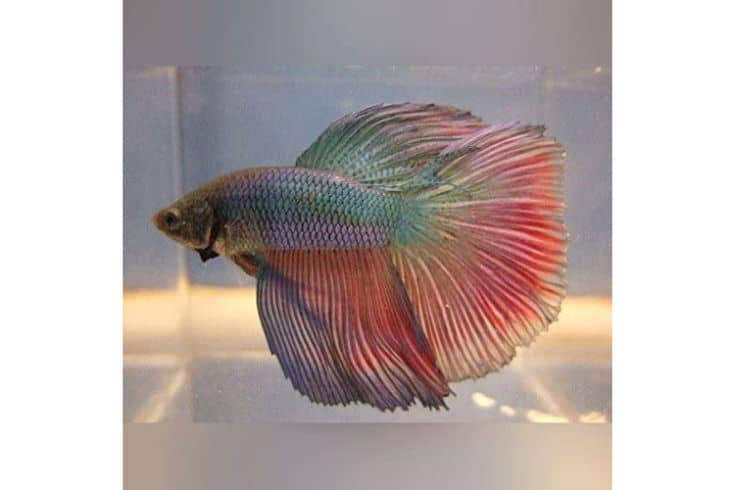
Though there are many niches of designer tails, the super delta is one of the most popular. As you can see in the photo, this tail type is wide and triangular, with a slight curl at the tips of the fins. Super delta tails are often considered to be very beautiful, and they’re a popular choice for both beginners and experienced betta owners.
One distinctive feature about the super delta is that there’s virtually no spiking or webbing between the fins. This gives the super delta a clean look, which many people find very aesthetically pleasing. Many bettas have unique colorations over tail types that can make for a stunning display, but not all colorations work well with every tail type.
If you’re looking for a betta with a super delta tail, we recommend choosing a fish with lighter coloration. Dark colors occasionally look a bit muddy on super deltas, so it’s best to stick with light colors like white, yellow, or pale pink.
2. Delta

Much like the super delta, the delta tail is wide and triangular. However, a few key differences set the delta apart from its super-sized cousin. For one, the delta is not too flared, meaning that the tips of the fins are not curled. Additionally, some webbing or spiking between the fins usually gives the delta a more textured look.
Deltas come in a wide range of colors and patterns, so it’s easy to find one that matches your personal style. If you’re looking for a delta tail betta, we recommend choosing a fish with bold fins and bright colors. This is bettas’ poster tail type, so you can’t go wrong!
3. Crowntail
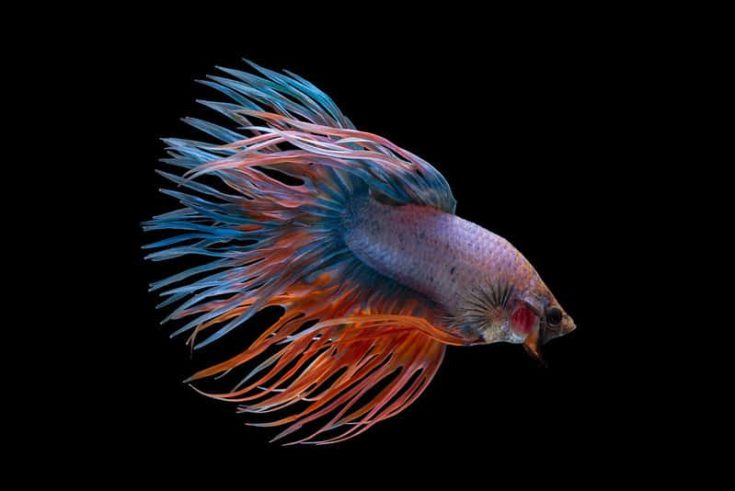
As one would expect, the crowntail betta is named after its tail, which has a crown-like appearance. The fins of the crowntail are very thin and fragile, with sharp spikes protruding from them. These spikes can range in length, but there should be no branches that run further than two-thirds down the length of the fin.
Because of the intricate branches and spikes on their fins, crowntail bettas require a little bit more care than other types of bettas. It’s important to make sure that there are no sharp objects in the tank that could snag on the fins, and you’ll also need to be extra careful when cleaning the tank.
If you’re considering a crowntail betta, we recommend choosing a fish with a bright and vibrant coloration. The contrast between the colorful body and the white spikes is truly beautiful, and it’s sure to turn heads whenever someone sees your fish!
4. Comb Tail – Half-Sun
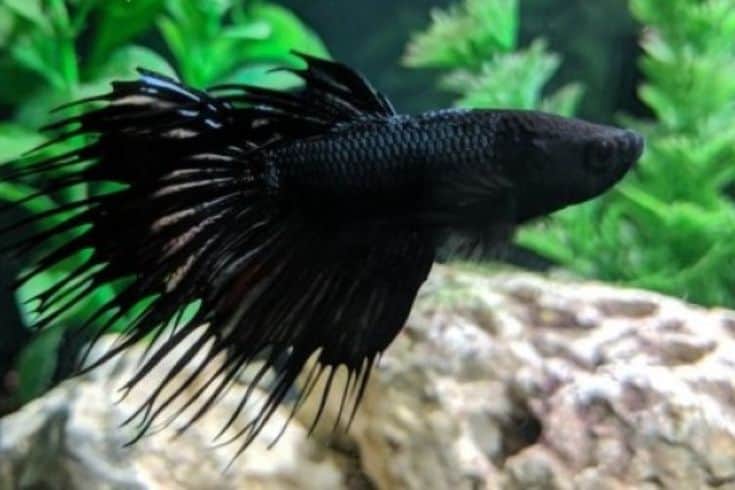
As one would expect based on the name “Half-Sun,” the comb tail is a variation of betta that has a half-sun tail. This tail type features a wide tail spread with long, thin fins that come to a point at the end. There is usually some webbing or spiking between the fins, which gives the fish a more textured look.
Caring for your comb tail betta is relatively easy, but you’ll need to be careful not to damage the fins. Make sure these gorgeous fish are either housed in solo tanks, or with tank mates that won’t nip at their fins. Ghost shrimp and Corydoras catfish make great tank mates for comb tails, though in the case of the former, make sure the shrimp are larger than the betta’s mouth!
5. Veiltail
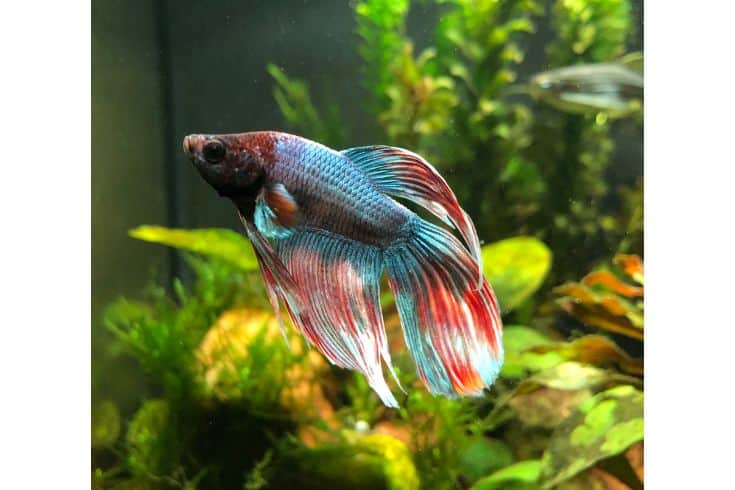
The veil tail may be a common tail type, but that doesn’t make them any less beautiful! These fish have long, flowing fins that come to a point at the end. There is usually some webbing between the fins, but it’s not as pronounced as it is in other tail types.
Veil tails are one of the easier betta tail types to care for, so they’re a great choice for beginner fishkeepers. Just be sure to keep their habitats nice and clean – like all bettas, they’re sensitive to poor water quality. Opt for lighting that isn’t too bright might also be a good idea, as veil tails can be skittish and may become stressed in a brightly lit tank.
6. Rosetail
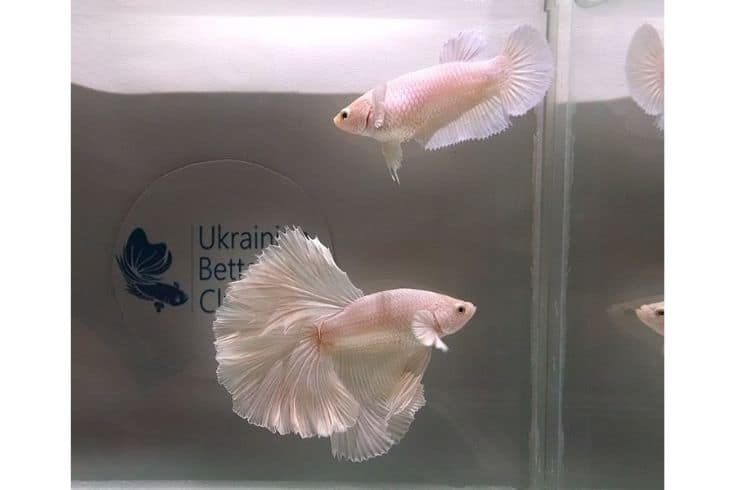
Does your idea of the perfect betta have long, flowing fins resembling a rose’s petals? If so, then a rosetail betta is the fish for you! These fish have tail webbing that extends all the way to the tips of their fins, giving them a very full and luxurious appearance. Much like the veil tail, rosetails also have fins that come to a point at the end.
The rosetail is widely considered to be the most difficult tail type to care for, so they’re not recommended for beginner fishkeepers. These weighty tails can be prone to tearing, and the fins are also very delicate. As a result, rosetail bettas require meticulous tank care and a lot of patience. But if you’re up for the challenge, these fish are definitely worth it!
7. Over-Halfmoon
If you’re looking for bettas with larger spread tails, you might want to consider an over-halfmoon betta. As the name suggests, these fish have tails that extend past a 180-degree spread. Gliding across the tank or bowl, these fish are truly a sight to behold. Hobbyists often describe them as “butterflies of the sea.”
As is often the case with caring for a betta with an oversized tail, you’ll need to be extra careful not to damage the fins. These fish are also more susceptible to swim bladder issues, so you’ll need to not overfeed them. Besides that, just be sure to keep the tank clean and provide plenty of hiding places for your over-halfmoon betta to feel safe and secure.
8. Halfmoon
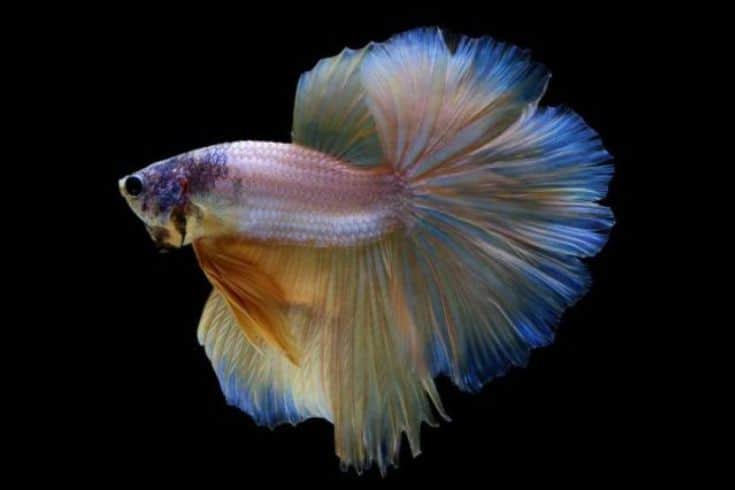
A halfmoon betta looks exactly as you might imagine – like a half moon! These fish have tails spread out at a 180-degree angle, giving them an almost semi-circular appearance. Halfmoon bettas are some of the most popular fish in the hobby, as their beautiful tails make them a joy to watch swim. Though they might look delicate, these fish are quite hardy.
Although the official definition of a halfmoon betta only refers to the tail spread, many hobbyists also use the term to describe fish with large and flowing fins. The key feature of a halfmoon betta is its tail shape – which should be as close to a perfect half-circle as possible. Anything less than a 180-degree spread is not considered a true halfmoon.
9. Feathertail
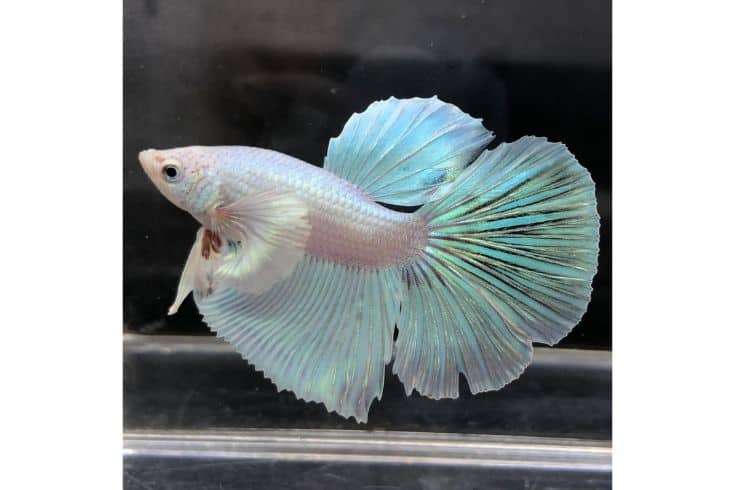
Of all the standard tail types, the feathertail might just be the most unique. These fish have long and flowing fins, but they also have a lot of webbing and excessive branching to create a ruffled appearance. As the name suggests, feathertail bettas look like exotic birds! These fish are sure to turn heads whenever they swim into view.
Feathertails might find swimming a bit more difficult than other bettas, as their fins can weigh them down. As a result, you should opt for a filter and pump that create a gentle current rather than a strong one. You’ll also need to be extra careful when cleaning the tank, as feathertails are more susceptible to fin damage.
10. Spadetail
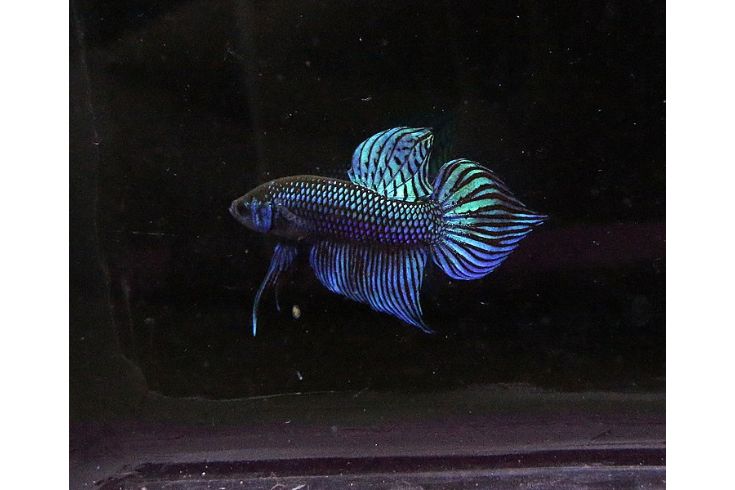
What a strange little name! Spadetail bettas get their name from their uniquely shaped tails, which resemble the blades of a spade. The base of their tails is wide and rounded, while the tips come to sharp points. These fish are relatively uncommon, but they nonetheless make for interesting conversation starters.
Spadetail bettas are particularly hardy, making them a great choice for beginner hobbyists. They are also relatively easy to care for, as long as you keep their tank clean and provide plenty of hiding places. These fish might not be the most eye-catching, but they certainly have personality.
11. Plakat/Shortfin
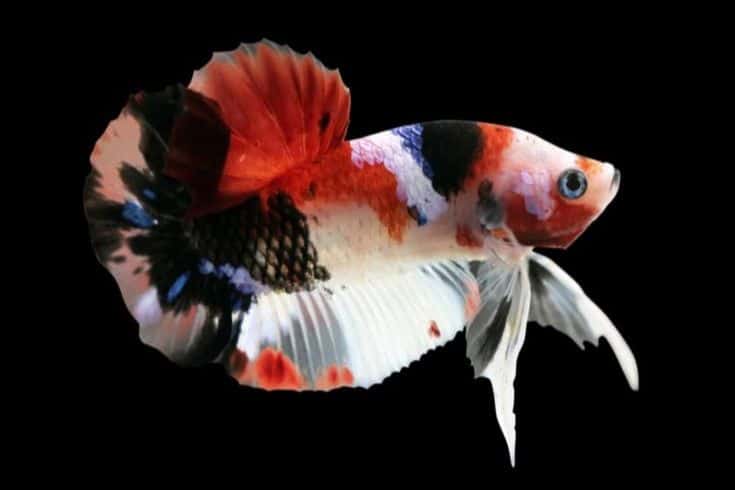
After delving into the world of long-finned bettas, you might be relieved to know that there are also varieties with shorter tails! Plakat bettas, also known as shortfin bettas, have fins significantly shorter than their long-finned counterparts. However, you shouldn’t let their unassuming appearance fool you – these fish can be just as aggressive as any other betta.
Plakat bettas are a bit more active than other betta varieties, requiring more space to swim. A ten-gallon tank is usually sufficient, but you might want to go up to 20 gallons if you plan on keeping more than one fish. These fish are also known for being particularly aggressive, so it’s best to keep them separate from other tank mates.
12. Halfmoon Plakats
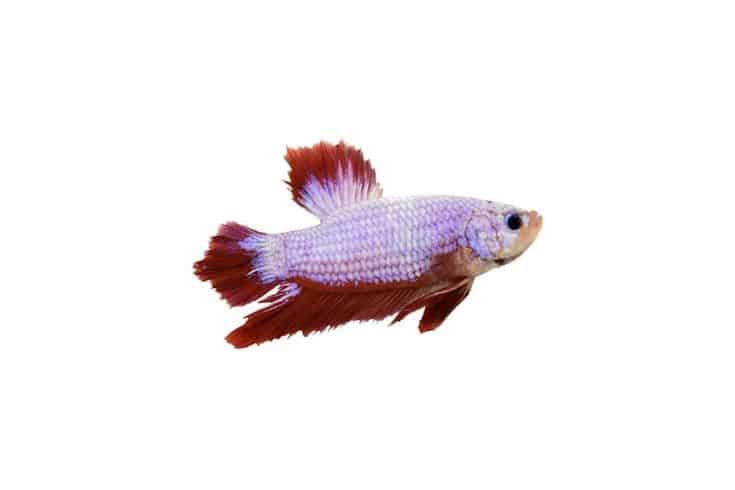
Though not exactly its own tail type, halfmoon plakats are worth mentioning nonetheless. As the name implies, these fish are a cross between halfmoon and plakat bettas. The result is a fish with the beautiful tail of a halfmoon and the shorter fins of a plakat. Think of it as a semicircle with shorter sides – very elegant indeed.
Halfmoon plakats are relatively uncommon, but they are becoming increasingly popular among hobbyists who want the best of both worlds. These fish are a bit more active than other halfmoon bettas, so they require more swimming space. However, this also means you’ll have the pleasure of watching them swim around your tank more often!
13. Dumbo Ear
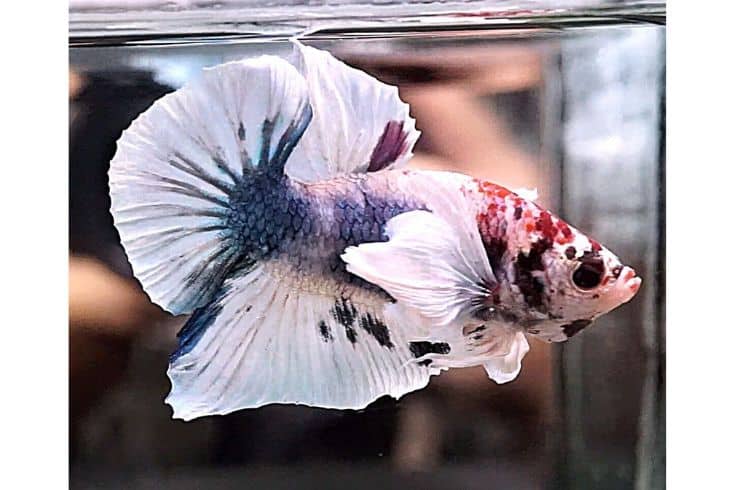
The beloved cartoon elephant isn’t the only one with big ears – dumbo bettas have them too! These fish are named after their large and protruding pectoral fins, which resemble the ears of a dumbo elephant. While the fins might look a bit strange, they are actually quite functional – they help the fish to maneuver in tight spaces and make sudden turns.
Because of their striking appearance, dumbo ear bettas are extremely popular among fish enthusiasts. Entire competitions have been dedicated to these fish, and are highly sought-after by collectors. If you’re lucky enough to get your hands on one of these fish, be sure to give them the care and attention they deserve.
14. Double Tail
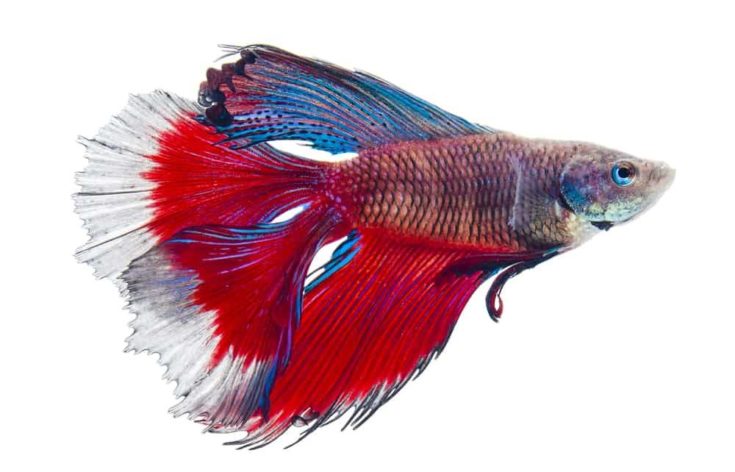
Separate tail lobes may sound a little strange, but double tail bettas are quite beautiful. As the name implies, these fish have two separate lobes on their tail fins, which gives them a unique appearance. Double tail bettas come in a wide range of colors and patterns, so you’re sure to find one that catches your eye.
Generally speaking, double tail bettas are a bit more expensive than other betta varieties. This is because they are relatively rare and considered to be quite beautiful. Only a select few specialized breeders have successfully managed to produce these fish, so they are quite a coveted commodity.
15. Roundtail
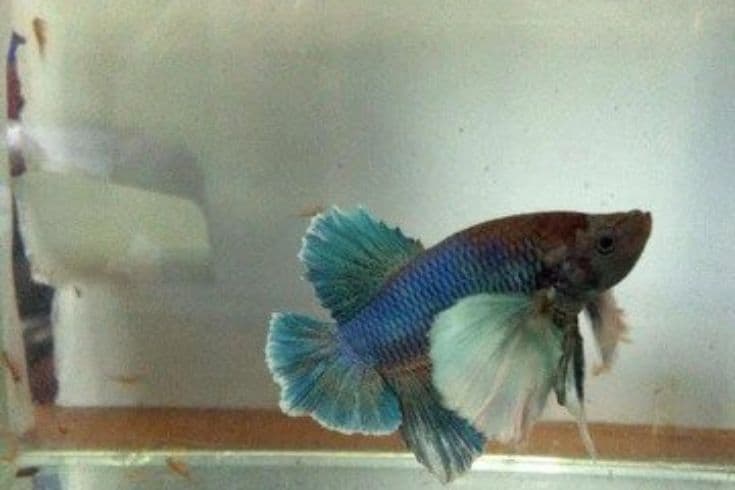
Last but not least – roundtail bettas. As the name implies, these fish have rounded tails at the tips rather than pointed. Many people describe them as looking like a halfmoon betta that has been “squished.” Roundtail bettas are relatively uncommon, but they are gaining popularity among hobbyists who appreciate their unique appearance.
A good diet filled with high-quality food is essential for keeping your roundtail betta healthy. These fish are known to be picky eaters, so you may need to experiment with different foods until you find one that they like. Once you’ve found a food they enjoy, be sure to stick with it to ensure they get the nutrition they need.
Choosing The Right Betta For You
Now that you know a bit more about the different types of bettas, it’s time to choose the right one for you. Consider the following factors to help you make your decision:
Budget
As much as we love to praise the beauty of bettas, it’s important to remember that they are still just fish. If you’re on a tight budget, there’s no shame in opting for a less expensive variety of betta. After all, they all have the same basic needs – food, water, and a bit of love. Your betta’s tail type shouldn’t be the determining factor in your decision.
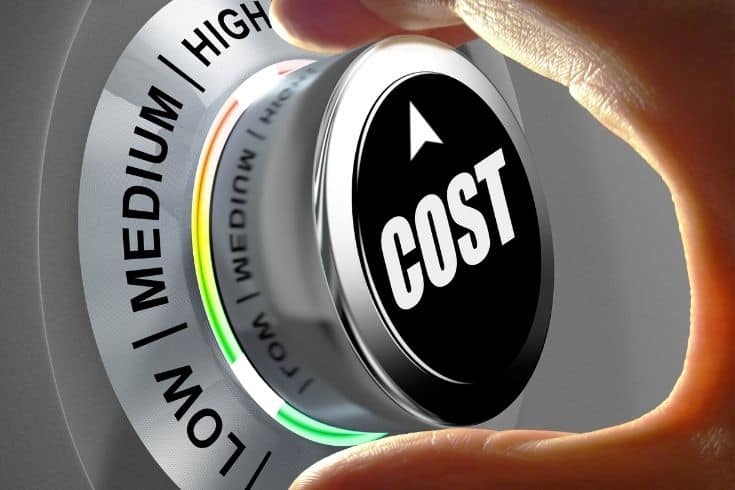
Look for common bettas in your area to make the most of a limited budget. These fish will be less expensive than rare or imported varieties and will be easier to care for since they are acclimated to your local water conditions.
In addition, you should also be sure to purchase your bettas from a reputable source. It is far better to pay a bit more for a healthy fish than to get a cheap fish that is sickly and likely to die. On a tight budget, we recommend prioritizing the health of your fish over its appearance.
Local Water Conditions
As we mentioned before, choosing a betta that is well-suited to your local water conditions is important. Different bettas thrive in different types of water, so be sure to do your research before making a purchase.
If you’re unsure what type of water you have in your area, your local fish store should be able to help you out. They can test your water to determine its hardness and pH levels and recommend a betta that will do well in those conditions. You can also do the same with one of these water test kits.
It’s also important to remember that different bettas require different amounts of care. If you’re not willing to put in the time and effort required to care for a delicate fish, then opt for a hardier variety.
Gender
Betta fish are notorious for their aggression towards one another, so it’s important to choose a gender that will work well in your setup. If you’re only planning on keeping one betta, then the decision is simple – just get a male. Males have much more vibrant colors than females, so they tend to be the more popular choice among hobbyists.
If you’re planning on keeping multiple bettas, you’ll need to carefully plan to ensure they all get along. The general approach is to opt for a betta sorority tank, which is a setup that houses multiple female bettas. You can also keep multiple males together, but you’ll need dividers to prevent them from fighting.
Above all, gender considerations come into play when deciding whether to breed your bettas. If you’re interested in breeding, then you’ll need to purchase both a male and female betta. Just be sure to research before taking on this responsibility, as breeding bettas can be challenging and time-consuming.
Conclusion
There you have it – everything you need to know about the different types of betta fish tails. With so many to choose from, it can be difficult to decide which one is right for you. When deciding, consider your budget, local water conditions, and gender preferences.
Do you have a favorite type of betta fish tail? Let us know in the comments below! And if you found this article helpful, be sure to share it with your friends and family who are also interested in bettas. Thanks for reading, and happy fishkeeping!
